"The Ultimate Flat Bed"
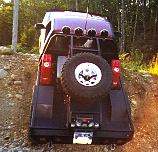
ATTENTION: This is a copy of Joe Chacon's Page detailing the flatbed he built, and which I got my plans from originally. Since his page is no longer up, I pulled this information from The Internet Archive and am reposting it here. As of 8/1/2002 Joe has given his blessing for this information to be available. I do not want to take any credit for this work, I am just re-posting the information to help others out when trying to build a flatbed based on Joe's GREAT work....
"The Ultimate Flat Bed"

Ok, so there I am at the Northwest Team Trophy Challenge in Oregon watching competitors as they come into the camp ground for the weekend and I notice that Toyota flat beds seem to be pretty popular in Oregon. I always thought that flat beds were cool and truly served a purpose on the trail but I really never had seen one up close enough to realize the practical nature of one of these things. Once TTC was over I decided that I was going to build a flat bed and build it right.
After talking with a few folks who owned flat beds I found out a few little drawbacks to having one. 1) your space is severely limited, specially if you decide to run a bobbed flat bed. 2) Flat beds have no walls so carrying things becomes a test of ingenuity. 3) Flat beds have no wheel wells/tubs so up travel is seriously compromised. 4) Weight is a serious factor with flat beds. Most are too light and rear tire traction is compromised.After taking into account all these things my mind started to work and all I could think about for weeks was how to eliminate the problems associated with the various flat beds I had seen. I finally ended up with my thoughts on paper and a design was generated about 6 weeks after TTC was over. Now that the bed is complete I feel I have addressed all the flaws and have come up with a design that truly is functional as well as practical for hard trail use and still allows full wheel travel, storage capacity/cargo space and the ultimate utility and functionality.
Update: Many people have been asking about mounting the bed. If you look real closely at the picture above you will see poly bushings (red). I used the original body mounts and built mounts on to the flat bed using 1/4" angle iron so the flat bed rides on poly and is allowed to twist (very little). The rear of the bed is actually hard mounted to the frame because of the winch. If you look at the picture where the 2 shackles are, they are attached to two peaces of 1"x3"x10" flat bar. The flat bar is intigrated into the bumper and actually slides into the frame rails and is bolted in. In order to get the bed on or off the truck it must be slid on from the rear, sliding those mounting points into the frame. This mounting of the rear of the bed serves a double purpose. 1) A place to mount shackles and tow points. 2) Hard mounting the rear of the bed where all the force is when winching or strapping.
For the gas tank filler, just cut a hole in the floor and mounted the filler hose and cap to the wheel tub using a 1/4" flat plate welded in as close to the stock location as possible.
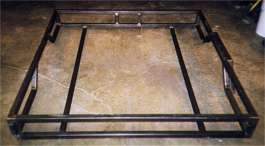
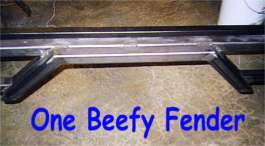
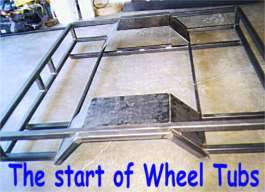
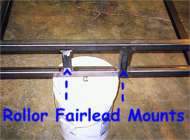
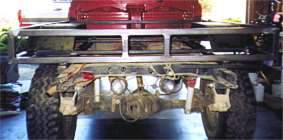
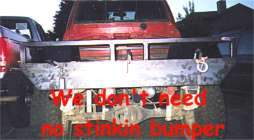
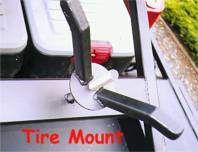

Over 200 hours of labor and about 375.00 of metal, a shit load of welding wire, grinding wheels and at least 20 cans of Duplicolor Spray On Bedliner (stuff is awesome) I am just about done. Need to build a custom battery box and a storage compartment but just have not had the time lately. This is by far the most extensive project I have accomplished on the rig so far and personally I would not choose to do it again (time consuming). Don't get me wrong, I am extremely proud and happy with how it came out. The rig was down for over a month and the withdrawals for getting out in the woods were hitting me "HARD". I guess that's the test of a true wheeler (how long can I go without wheeling)? :o)
The bed is 14" shorter and weighed in at 528 lbs.. Over all the truck is about 200lbs lighter than it was before but the weight distribution is 3 feet lower than before and center of gravity is at least 2 feet lower. I already feel it on the hwy. when I take corners. The truck hugs the road instead of leaning. Wheeling is the ultimate now! As long as the front end can squeeze through the back end will definitely follow. The utility of this type setup is unmatched with an XD8000i in the rear, 10 extra gal. of fuel, High lift and spare tire readily available, backup and auxiliary lighting, tools and spare parts easily accessible and a departure angle of 58 degrees with the shackles being the break away point (over 60 degrees at the bumper).
This page last modified 07/10/03 Questions? Concerns? email DRM